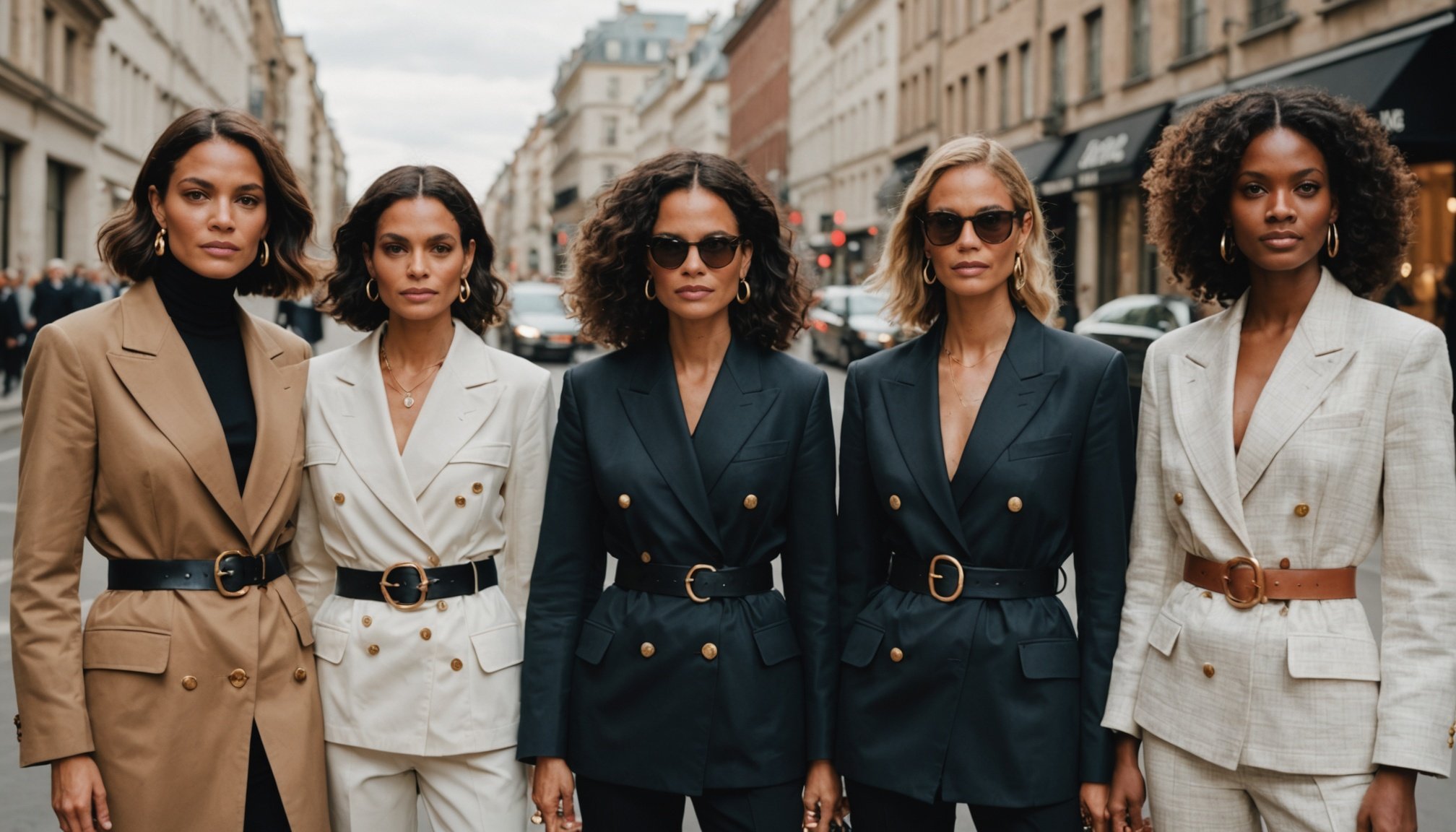Profiles of Leading Fashion Visionaries
The world of fashion has been shaped by visionary designers whose unique perspectives have left an indelible mark. Throughout history, individuals like Coco Chanel and Yves Saint Laurent have redefined fashion norms with their innovative ideas. These fashion leaders challenged traditional designs, paving the way for brands that champion creativity and self-expression.
Today, industry profiles highlight several current leaders making a sizeable impact. Designers such as Virgil Abloh and Stella McCartney are at the forefront of integrating sustainable practices and technology into their collections. Abloh’s work with Off-White blends streetwear with high fashion, resonating with a younger, diverse audience. Meanwhile, McCartney is renowned for her eco-friendly approach, setting a standard for future designers.
Topic to read : A Stylish Journey Through UK Fashion Trends in 2024;151Eco-Friendly Wardrobe Tips for Thriving in Unpredictable Times
The personal journeys of these visionary designers underscore their passion and resilience. Many started with small workshops and faced numerous challenges before gaining recognition in the industry. They exemplify the importance of persistence, a clear vision, and the courage to push boundaries. These fashion leaders continue to inspire, leading the charge in innovative and ethical fashion.
Trends Influencing Fashion Leadership
In the ever-evolving world of fashion trends, leaders are continuously required to adapt and innovate. The role of leadership trends has shifted significantly due to the influence of digital platforms. Social media, in particular, plays a pivotal role, as it provides real-time feedback and creates authentic connections between fashion brands and their audience. This immediate engagement has transformed how brands perceive market dynamics and interact with consumers.
Also to read : Leading Fashion Innovators: Stay Ahead in Style Trends
Market influences now extend beyond traditional metrics. Today’s consumers value transparency, sustainability, and ethical production, driving fashion leaders to integrate these elements into their strategies. Brands that align with these preferences often see enhanced loyalty and community support.
Social media also encourages direct consumer involvement in fashion decisions, which influences design, marketing, and leadership trends. Fashion brands are leveraging influencer collaborations to capture attention and drive engagement, further demonstrating the power of fashion trends shaped by digital presence.
Simultaneously, shifts in consumer behavior, such as the rise of ethical consumerism and demand for inclusivity, pressure leaders to innovate. By understanding these trends, fashion visionaries maintain relevance and continue to excel. This environment challenges leaders not just to follow trends but to predict and shape future directions.
Lessons from the Resilient Fashion Leaders
Fashion is as much about resilience as it is about creativity. Learning from leaders such as Coco Chanel and Yves Saint Laurent provides invaluable insights into navigating the industry’s challenges. These visionaries illustrate that setbacks are not just common but formative. By overcoming initial failures, they demonstrate resilience in fashion, affirming that persistence is key to success.
A significant part of their journey was mentorship in fashion, which serves as a beacon for upcoming designers. Established figures often credit their achievements to the guidance they received from mentors, who provided not only technical skills but also the emotional support necessary to thrive. This highlights the importance of nurturing talent and passing on wisdom to the next generation.
Moreover, reflection on personal experiences of overcoming adversity is crucial. These fashion leaders recount instances where rejection only fueled their determination. Real-world examples speak louder than theoretical knowledge—a testament to the power of real-life learning. Aspiring designers can take heart in knowing that challenges faced by even the most successful individuals are stepping stones to eventual triumph. Such stories serve to inspire those embarking on their path in the fashion industry.
Strategies for Thriving in Unpredictable Times
In the fast-paced world of fashion, the ability to adapt to change is crucial for survival. Fashion leaders utilise varied resilience strategies to navigate turbulent periods successfully. A key aspect is maintaining a forward-thinking mindset, always ready to pivot as needed. This willingness to embrace change enables businesses to stay ahead of the curve, ensuring they remain relevant even during challenging times.
One common business adaptability strategy is the adoption of flexible business models that cater to rapidly changing consumer demands. Examples include virtual fashion shows and digital-first marketing strategies, which have become essential tools in reaching global audiences. By leveraging digital platforms, brands not only expand their reach but also gather vital consumer insights in real-time.
Maintaining brand integrity during uncertain times can be challenging, yet it is pivotal for consumer trust. Fashion leaders often prioritise clear communication and transparency to uphold their brand values, even when faced with adversity. By committing to authenticity and consistent messaging, brands can fortify their identity, enhancing customer loyalty and trust. These approaches underscore the importance of resilience in achieving long-term success in the fashion industry.
Innovations Shaping the Future of Fashion
The fashion industry is witnessing a revolution, driven by fashion innovations that are redefining design and production. Technology in fashion has become a cornerstone for modern brands looking to stay competitive. From AI-driven design tools to advanced 3D printing techniques, technology is enabling designers to push creative boundaries while reducing time-to-market.
Sustainable practices are no longer a niche but a necessity, as consumers increasingly demand environmental responsibility. Brands are embracing innovations like biodegradable textiles, waterless dyeing processes, and circular fashion models to minimize their ecological footprint. This shift not only addresses consumer concerns but also positions brands as leaders in a more conscious fashion era.
Case studies of brands like Adidas show a proactive approach to innovation. Their partnership with organizations like Parley for the Oceans exemplifies how fashion leaders are turning waste into valuable resources, creating sustainable shoes from recycled ocean plastic. Such strides highlight the industry’s potential to balance creativity with responsibility, setting a precedent for future visionary designers. As these examples illustrate, embracing sustainable practices and technology is essential for thriving in the ever-evolving world of fashion.

